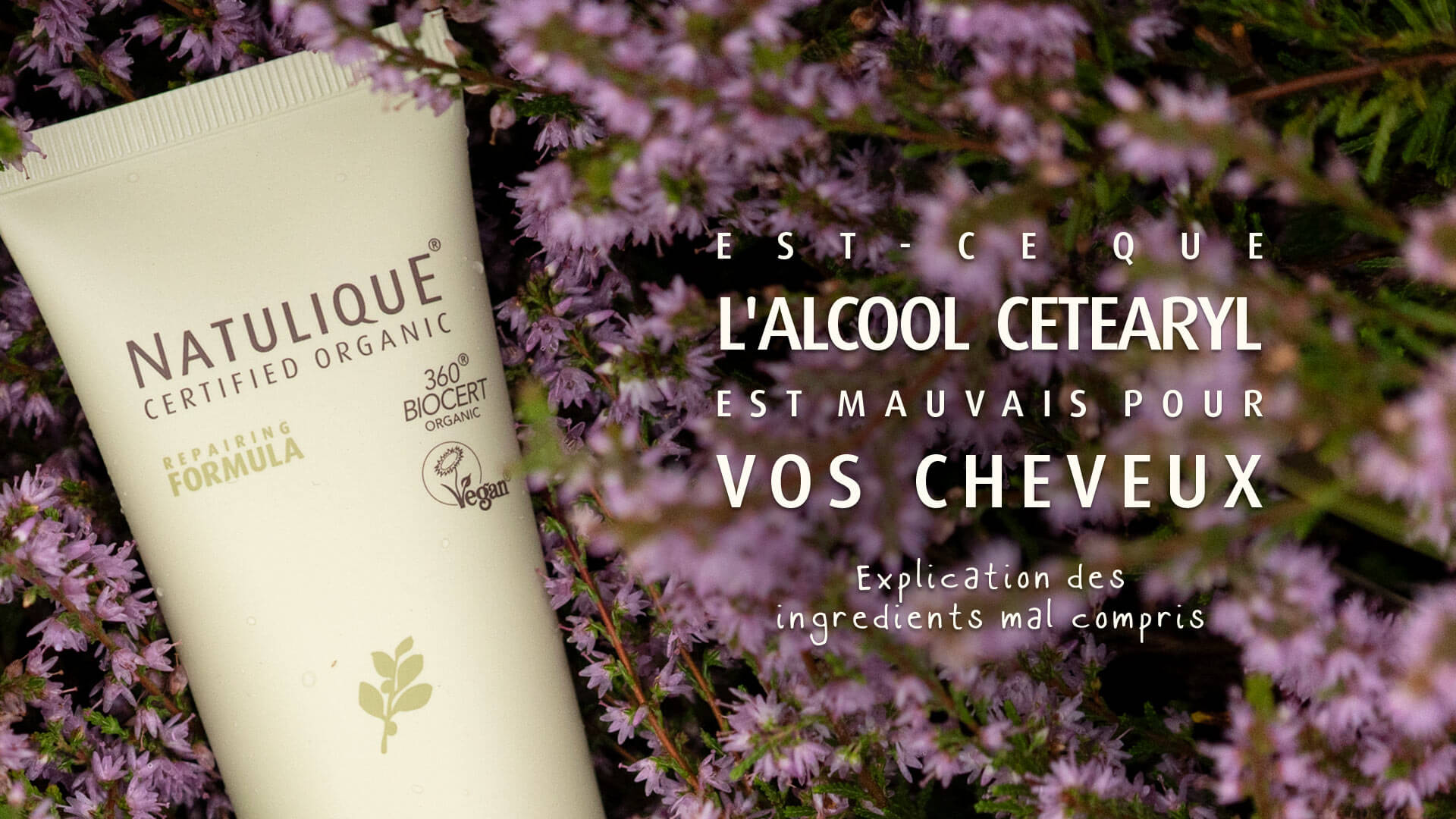Introduction to concerns about color-treated hair
Coloring your hair is a way of asserting your style and personality, but it's essential to adopt specific gestures to avoid breakage. Color-treated hair requires special care to preserve its health and shine. Understanding the effects of coloring is the first step in preventing hair problems. Here's an overview of the main reasons why color-treated hair can be prone to breakage, and how you can protect it effectively.
The impact of coloring on hair
Understanding the chemical effects of color
Most hair color products use chemical agents to modify the hair's natural color. These chemicals, such as peroxide and ammonia, open up the hair cuticle to allow the colorant to penetrate. This chemical intervention inevitably alters the hair's structure, making it more vulnerable to breakage.
Potential damage caused by repeated coloring
Frequent coloring accentuates the initial damage. Repeated chemical interventions can make hair porous and weak, diminishing its ability to retain moisture and resist external aggressions. It is therefore crucial to limit the frequency of coloring and adopt good practices to reduce the harmful effects.
Signs of hair breakage
Identify split ends and dull hair
One of the first signs that your color-treated hair is damaged is the presence of split ends. These are often accompanied by a rough texture and a dull appearance, symbols of advanced degradation of the hair fiber. Split ends are the result of protein loss and lack of moisture.
Understanding the link between brittle hair and coloring
Hair must be strong enough to withstand the chemical treatments associated with coloring. When hair begins to break easily, it's a strong indicator that coloring has weakened its structure. Fibers become less elastic and break under the slightest stress, such as excessive brushing or styling.
Tips to prevent color-treated hair breakage
The choice of color
Prefer ammonia-free coloring products
When it comes to choosing a hair color product, opting for ammonia-free formulas can make a big difference to the health of your hair. Ammonia-free colorants are generally gentler and more scalp-friendly, reducing the risk of irritation and long-term damage. What's more, they are often enriched with nourishing ingredients that help protect the hair fiber during the coloring process.
The role of professional expertise in damage reduction
Calling in a professional hairdresser to color your hair can help minimize the risk of breakage. Professionals have the experience and knowledge to apply color evenly, while choosing the products best suited to your hair type. They can also advise on the type of color to use and the ideal frequency to maintain your hair's health.
The importance of hair preparation
Pre-color treatments to consider
To optimize your hair's resistance to coloring, we recommend pre-color treatments. These include moisturizing and nourishing masks that strengthen the hair fiber. These treatments help create a healthy hair base, reducing the risk of post-coloration breakage. A protein-based treatment is also a good choice for sheathing and strengthening hair.
Nourishing hair for greater resilience
A diet rich in essential nutrients is crucial for strong hair. Make sure you get enough protein, vitamins and minerals such as iron and zinc. These elements not only strengthen hair, but also contribute to its growth and overall health. At the same time, incorporating natural oils such as argan or coconut oil into your routine can help maintain the moisture and shine of color-treated hair.
The right choice of hair care products
Choose sulfate-free products to extend color life
Using sulfate-free shampoos and conditioners is highly recommended for color-treated hair. Sulfates are aggressive foaming agents that can cause hair to fade more quickly, in addition to drying it out. Choosing sulfate-free products helps preserve color longer, while protecting scalp and lengths. Look for specific ranges for color-treated hair, often enriched with moisturizing and protective active ingredients.
See also: Tips for prolonging the radiance of your hair color
Daily care for healthy color-treated hair
The right choice of hair care products
Choose sulfate-free products to extend color life
Opting for sulfate-free shampoos and conditioners is essential for preserving your hair color. These products help maintain shine while preventing color-treated hair from drying out. What's more, they are often formulated with moisturizing ingredients that strengthen and nourish hair, prolonging the life of color.
Incorporate specific daily care products for color-treated hair
Incorporating specific care products into your daily routine can make a big difference. For example, using a color-protecting spray can protect your hair from external aggressors, such as UV rays and pollution. These protectors create a barrier that preserves color and prevents premature fading.
Styling techniques to minimize breakage
Use appropriate styling tools
Choosing the right tools is essential to minimize damage. Choose natural-bristle brushes and wide-tooth combs to detangle hair without damaging it. Avoid heating appliances wherever possible, and if you must use them, opt for a straightening iron or hair dryer with temperature control to reduce the impact of heat.
Adopt protective styles
Wear hairstyles that minimize daily manipulation, such as braids or buns. These styles help protect ends and reduce breakage from excessive styling. In addition, opt for satin or silk accessories to minimize friction and keep your hair moisturized.
Maintain adequate hydration
Moisturize hair from within
Healthy color-treated hair starts from the inside. Drink at least 1.5 liters of water a day to ensure adequate hydration. Good internal hydration will reflect on the appearance and resilience of your hair, making it less prone to breakage.
Apply hair masks regularly
Including moisturizing masks in your weekly hair routine can relieve color-stressed hair. These masks, made with nourishing ingredients like vegetable oils, provide deep hydration and restore the natural shine and strength of your color-treated hair.
Adopt good washing habits
Do not wash hair too frequently
Limiting washing to two or three times a week helps preserve the hair's natural oils. These oils are essential for maintaining balanced hydration and avoiding excessive drying that could compromise your hair's color and texture.
Rinse with lukewarm or cold water
Hot water can open up the hair cuticle, resulting in faster color loss. By choosing to rinse with lukewarm or cold water, the cuticle remains protected, better retaining color and moisture. This simple practice contributes greatly to color longevity and reduced breakage.
Professional care for healthy color-treated hair
Benefits of salon treatments for color-treated hair
Importance of deep treatment care
Regularly consulting a salon for deep treatment care is crucial to maintaining the health of color-treated hair. These treatments provide intense nutrition and targeted hydration that at-home products often can't match. Salon treatments use formulas designed to restore shine and strengthen hair's resistance, which is essential after chemical treatments.
Professional application and personal advice
A professional hairdresser can provide personalized advice to suit your hair type and specific needs. He or she can recommend specialized products to prolong color life and reduce breakage. In addition, professional application of treatments ensures that products penetrate effectively, maximizing their benefits.
Frequency of show visits
Plan regular care
Depending on the condition of your hair and the type of color you have, fortnightly to monthly visits to the hairdresser may be necessary. These appointments allow you to maintain your color and assess the general condition of your scalp and lengths. Regular maintenance helps to anticipate and treat breakage problems before they become serious.
When to consult a professional
It's important to consult a professional at the first signs of severe damage, such as excessive breakage or rapidly fading color. An expert can then adapt the necessary treatments and offer you a tailor-made solution to restore your hair in the best possible conditions.
Using modern hair treatments
Keratin-based treatments
Keratin-based treatments are ideal for strengthening color-treated hair. By restoring lost proteins and smoothing the hair cuticle, these treatments reduce frizz and provide the shine essential for healthy hair. They also help maintain the hair fiber's original structure.
Specific hair masks
Regular application of specific hair masks can greatly help to protect and strengthen color-treated hair. Look for masks containing active ingredients like amino acids and argan oils, which nourish and preserve color radiance.
FAQ about color-treated hair
What's the best way to dry color-treated hair without damaging it?
Air-dry whenever possible. If you use a hair dryer, be sure to use a thermal protector and set the appliance to a low to medium temperature.
Are homemade masks good for color-treated hair?
Yes, homemade masks with natural ingredients like avocado, olive oil, and honey can offer nourishing benefits, but it's advisable to complement them with professional products for optimal results.
What kind of diet helps keep color-treated hair healthy?
A diet rich in vitamins A, E and C, as well as omega-3 fatty acids and proteins, is beneficial. In addition, a sufficient intake of zinc and iron supports overall hair health.
How can I avoid discoloration caused by sun exposure?
Use hair products with UV filters and wear a hat when out in the sun to protect color and limit damage.
Can temporary coloring damage the hair?
Temporary colorations are generally less aggressive, as they do not permanently alter the hair's structure. However, it is always advisable to nourish and moisturize hair to prevent breakage.





